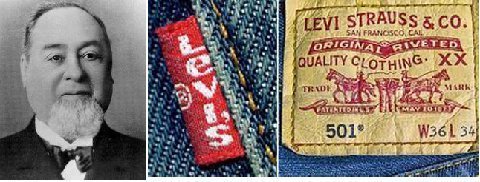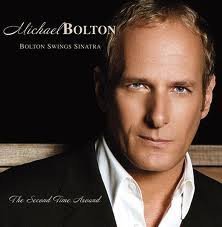A snail is a shelled gastropod. The name is most often applied to land snails, terrestrial pulmonate gastropod molluscs. However, the common name snail is also used for most of the members of the molluscan class Gastropoda that have a coiled shell that is large enough for the animal to retract completely into. When the word "snail" is used in this most general sense, it includes not just land snails but also numerous species of sea snails and freshwater snails. Gastropods that naturally lack a shell, or have only an internal shell, are mostly called slugs, and land snails that have only a very small shell (that they cannot retract into) are often called semi-slugs.
Snails have considerable human relevance, including as food items, as pests, and as vectors of disease, and their shells are used as decorative objects and are incorporated into jewelry. The snail has also had some cultural significance, tending to be associated with lethargy. The snail has also been used as a figure of speech in reference to slow-moving things. The snail is similar in shape to the cochlea.
Overview
Snails that respire using a lung belong to the group Pulmonata. As traditionally defined, the Pulmonata were found to be polyphyletic in a molecular study per Jörger et al., dating from 2010. But snails with gills also form a polyphyletic group; in other words, snails with lungs and snails with gills form a number of taxonomic groups that are not necessarily more closely related to each other than they are related to some other groups.
Both snails that have lungs and snails that have gills have diversified so widely over geological time that a few species with gills can be found on land and numerous species with lungs can be found in freshwater. Even a few marine species have lungs.
Snails can be found in a very wide range of environments, including ditches, deserts, and the abyssal depths of the sea. Although land snails may be more familiar to laymen, marine snails constitute the majority of snail species, and have much greater diversity and a greater biomass. Numerous kinds of snail can also be found in fresh water.
Most snails have thousands of microscopic tooth-like structures located on a banded ribbon-like tongue called a radula. The radula works like a file, ripping food into small pieces. Many snails are herbivorous, eating plants or rasping algae from surfaces with their radulae, though a few land species and many marine species are omnivores or predatory carnivores. Snails cannot absorb colored pigments when eating paper or cardboard so their feces are also colored.
Several species of the genus Achatina and related genera are known as giant African land snails; some grow to 15 in from snout to tail, and weigh 2 lb.The largest living species of sea snail is Syrinx aruanus; its shell can measure up to 35 in in length, and the whole animal with the shell can weigh up to 40 lb. Recently, the smallest land snails, Angustopila dominikae, have been discovered in China, and measure 0.86mm long.
The largest known land gastropod is the African giant snail Achatina achatina, the largest recorded specimen of which measured 15.5 in from snout to tail when fully extended, with a shell length of 10.7 in in December 1978. It weighed exactly 2 lb. Named Gee Geronimo, this snail was owned by Christopher Hudson (1955–79) of Hove East Sussex, UK, and was collected in Sierra Leone in June 1976.
Snails are protostomes. That means during development, in the gastrulation phase, the blastopore forms the mouth first. Cleavage in snails is spiral holoblastic patterning. In spiral holoblastic cleavage, the cleavage plane rotates each division and the cell divisions are complete. Snails do not undergo metamorphosis after hatching. Snails hatch in the form of small adults. The only additional development they will undergo is to consume calcium to strengthen their shell. Snails can be male, female, hermaphroditic, or parthenogenetic so there are many different systems of sexual determination.
Diet
Snails' eating habits vary widely, with some being generalists and some being specialist feeders. Snails feed at night.[9] They feed primarily on decaying organic matter. Their diet also includes fungi, lichens, green foliage, worms, centipedes, insects, animal feces, carrion, and other slugs. Some snails feed on other snails too.
If you want to read more, go here:
- SERVES
- 2
- COOK TIME
- 20 Min
Fishing for a dinner idea to serve your sweetheart tonight? Our recipe for Cupid's Fish Fillets makes a tasty dinner for two. It features white fish fillets topped with some crab and a buttery breadcrumb mixture. It looks and tastes fancy enough for a special Valentine's Day meal, but it's also easy enough to make anytime you want to impress your loved one.
- 2 white flesh fish fillets (about 1 pound)
- Salt for sprinkling
- Black pepper for sprinkling
- 2 tablespoons mayonnaise
- 2 teaspoons lemon juice
- 1 (6-ounce) can lump crabmeat, drained very well
- 2 tablespoons Italian breadcrumbs
- 1 tablespoon butter, melted
- 1 teaspoon chopped fresh parsley
- Preheat oven to 375º. Coat a baking sheet with cooking spray.
- Sprinkle fish evenly with salt and pepper; set aside. In a small bowl, mix mayonnaise and lemon juice. Gently stir in crabmeat. Spoon the crabmeat mixture evenly over the fish fillets.
- In a small bowl, mix the bread crumbs, butter, and parsley. Sprinkle mixture evenly over fish. Bake for 20 minutes or until golden and fish flakes easily with a fork.
Pistachios arrived in the United States sometime in the 1880s, but they have been cultivated in the Middle East since Biblical times.
The pistachio tree grows to about 20 feet tall needing little or no rain and must have high heat. Amazingly, in Iran, they claim to have 700-year-old pistachio trees! A new tree takes between 7 and 10 years to mature and bear fruit.
Pistachio Facts:
- All pistachio shells are naturally beige in color. Some companies dye nuts red or green if nuts are inferior or for consumer demand.
- California produces about 300 million pounds of pistachios each year, accounting for 98 percent of America’s production.
- Pistachio shells typically split naturally when ripe.
- The kernels are often eaten whole, either fresh or roasted and either salted or unsalted.
- In the Middle East, people call the pistachio the smiling nut.
- In China, people call the pistachio the happy nut.
“Pistachios are an excellent source of vitamin B6, copper and manganese and a good source of protein, fiber, thiamine and phosphorus. Scientific evidence suggests but does not prove that eating 1.5 ounces per day of most nuts, such as pistachios, as part of a diet low in saturated fat and cholesterol, may reduce the risk of heart disease.” US Food and Drug Administration, July 2003
A Great Thing To Do — Recycle the Pistachio Shells!
The empty pistachio shells are useful for recycling in several ways. If unsalted, the shells need not be washed and dried before reuse, but washing is simple if that is not the case. Practical uses include as a fire starter; kindling to be used with crumpled paper; to line the bottom of pots containing houseplants for drainage and retention of soil for up to two years; as a mulch for shrubs and plants that require acid soils, as a medium for orchids; and as an addition to a compost pile designed for wood items that take longer to decompose than leafy materials (it can take up to a year for pistachio shells to decompose unless soil is added to the mix).
Shells from salted pistachios can also be placed around the base of plants to deter slugs and snails. Many craft uses for the shells include holiday tree ornaments, jewelry, mosaics and rattles. Research indicates that pistachio shells may be helpful in cleaning up pollution created by mercury emissions.




















No comments:
Post a Comment